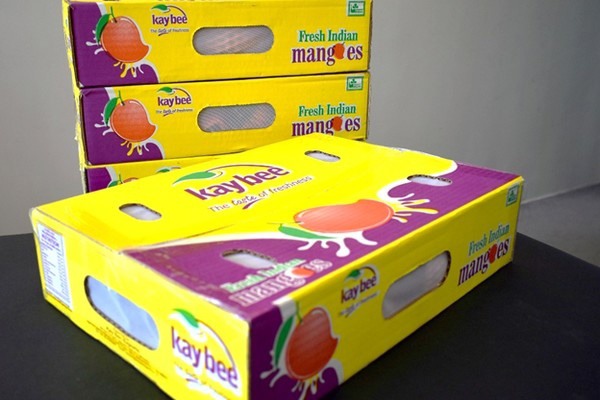The mangoes from India had an early start to the domestic market, says Kaushal Khakhar, CEO of Indian fresh produce exporter Kay Bee Exports: "The normal shipping season for Indian mangoes is from March to June. This year, some of the fruit came to the local markets early. This was due to the favorable weather in some growing areas. With India growing more than 40% of the world's mango production, there is so much volume available in India for local consumption that some regional increase or decrease in volumes doesn't affect the overall market dynamics as much."
 © Kay Bee Exports
© Kay Bee Exports
Trump announcing tariffs against the entire world did lead to some confusion and uncertainty. Khakhar states that although things have calmed down, with only the flat 10% tariffs being in place, this will still have a major impact on the demand from importers in the U.S. "The announcement of import tariffs by USA coincided exactly with the first air shipments to USA. There was a lot of uncertainty initially, as the exact mechanism of tariffs was also not fully known. Indian mango has been subjected to an import duty of 6.6 cents per kg from inception. The newly announced tariffs were an interim of 10%, with them increasing to 26% from 9th April. This has now been paused for a 90-day period, but the 10% tariff remains. These ongoing 10% tariffs are quite significant. Certain price-conscious importers have chosen to wait and watch rather than initiate imports."
Khakhar says that the trade to the United States had only just been ramping up, so these tariffs really threw a monkey wrench in the entire export plans for this mango season: "Traditional main-stay markets for Indian mango have been the Middle East and Europe. Both have been well-served for several decades and offer limited growth opportunities. While India has had USA market access since 2007, the volumes have only recently started picking up. There was a pause in supply during the two COVID-19 years. The disturbance surrounding the Red Sea has also caused a lot of spikes in air freight rates. As such, we were looking forward to a strong season this year, but the ongoing volatility around tariffs do seem to have led to a subdued start."
 © Kay Bee Exports
© Kay Bee Exports
There's no need to give up, though, Khakhar emphasizes. The focus will now simply have to be on other markets. "We have chosen to work on multiple markets around the world to reduce the risk to ourselves and avoid relying on a single market. The global trade dynamics are changing, and we need to adapt to the evolving situation. As it is famously said, change is the only constant!"
"We have to read the situation with a positive bent of mind. The impact of tariffs is quite global. The flat 10% tariffs are applicable to most exporting countries for the USA. We understand that our policy makers are engaged with their counterparts in USA and there likely will be some agreement on the long term. These are interesting times for the trade, and the best we can do is to continue focusing on what our customers expect from us. So we aim to deliver the best product with the best quality and service levels and at competitive prices," Khakhar concludes.
For more information:
Kay Bee Exports
Tel: +91 88 79 000 973
Email: Export@kaybeeexports.com
www.kaybeeexports.com
